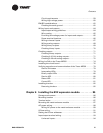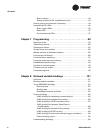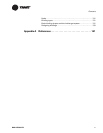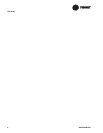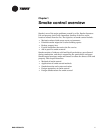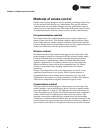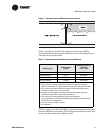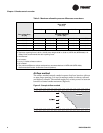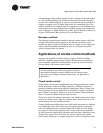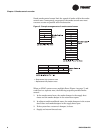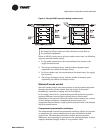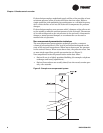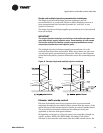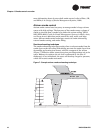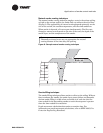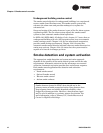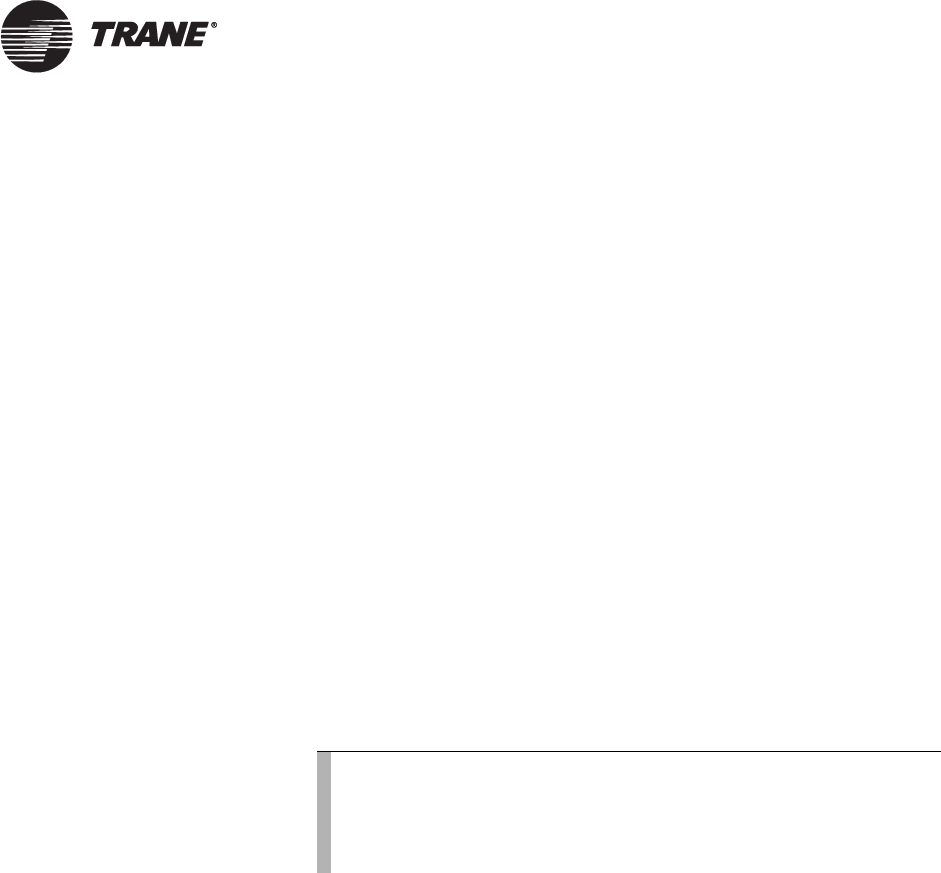
Applications of smoke control methods
BAS-APG001-EN 5
A disadvantage of the airflow method is that it supplies increased oxygen
to a fire. Within buildings, the airflow method must be used with great
caution. The airflow required to control a wastebasket fire has sufficient
oxygen to support a fire 70 times larger than the wastebasket fire. The
airflow method is best applied after fire suppression or in buildings with
restricted fuel. For more information on airflow, oxygen, and combustion,
refer to Huggett, C. 1980, Estimation of Rate of Heat Release by Means of
Oxygen Consumption Measurements, Fire and Materials.
Buoyancy method
The buoyancy method clears smoke from large volume spaces with high
ceilings. The method employs paths to the outside and relies on hot
combustion gases rising to the highest level in a space. At the high point,
either a powered smoke exhausting system or a non-powered smoke
venting system clears the smoke.
Applications of smoke control methods
Applying the methods of smoke control to spaces within a building
provides a building smoke control system. Smoke control methods are
most commonly applied to building spaces to provide zoned, stairwell,
elevator shaft, and atrium smoke control.
Zoned smoke control
Zoned smoke control uses compartmentation and pressurization to limit
smoke movement within a building. Typically, a building consists of a
number of smoke control zones. Barriers (partitions, doors, ceilings, and
floors) separate the zones. Each floor of a building is usually a separate
zone (
Figure 3 on page 6). However, a zone can consist of more than one
floor, or a floor can consist of more than one zone.
The zone in which the smoke is detected is the smoke control zone. Zones
next to the smoke control zone are adjacent zones. Zones not next to the
smoke control zone are unaffected zones.
Pressure differences produced by fans limit smoke movement to adjacent
and unaffected zones. The system may pressurize adjacent zones and
leave all unaffected zones in normal operation (Figure 3(a) and Figure
3(c),
page 6). Pressurizing adjacent zones creates a pressure sandwich.
Or, the system may pressurize adjacent zones and some unaffected zones
(Figure 3(b),
page 6). In either case, the system exhausts the smoke
control zone, putting it at a negative pressure, relative to adjacent zones.
Note:
It is beyond the scope of this user guide to provide
mathematical design analysis information for smoke control.
For references to design analysis information, see
Appendix A,
References.



